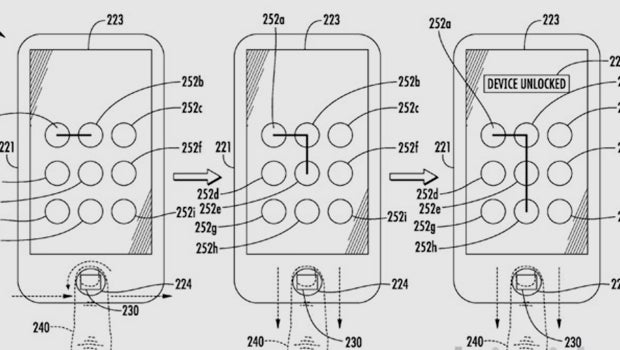iPhone TouchID could get fingertip-wiggling security boost in future

Apple could include an upgraded version of the TouchID sensor in future iPhones that would react to moving fingertips.
Instead of just pressing a finger down to unlock a phone, the new tech could see combinations of sliding or twisting to double-down on handset security.
The concept was unveiled in a patent application belonging to Dale R. Setlak, as reported by Apple Insider.
He’s the guy who co-founded AuthenTec, the Apple-owned firm that works on TouchID sensors.
Related: Apple Pay UK rollout could be very soon
The patent is filed as ‘Electronic Device Switchable to a User-Interface Unlocked Mode Based Upon a Pattern of Input Motions and Related Methods,’ which is a very fancy of saying: Unlock a smartphone by moving your finger about.
One such example of this is illustrated in figures 11A through 11C, which show a standard lock-screen swipe pattern that Android users will be familiar with.
Instead of swiping around the screen however, users would instead swipe the pattern via the TouchID sensor, adding an extra layer of security.
The use of this tech could be a response to the integration of TouchID into Apple Pay, as a way of ensuring financial information is a secure as possible to assuage consumer concerns.
TouchID was first added with the iPhone 5S, and has since been included on the iPhone 6, the iPhone 6 Plus, the iPad Air 2, and the iPad Mini 3.
Of course, there’s no way of knowing whether Apple will even use the patent – it was first filed in June 2013 and the fingertip-wiggling TouchID front has been quiet ever since.


